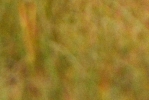Blog
IN A WILD TAIGA WITH NIKON CAMERAS (30.09.2015)
Author: Erik Mandre
In the autumn of 2015, I went to photograph bears at the Estonian-Russian border. I had the honours of testing the 36.3 megapixels Nikon D810A camera. As we know, the latter is the first DSLR camera that is especially designed for astrophotography and its resolution is the most remarkable of all Nikon DSLR cameras.
As a photography enthusiast, I mainly focus on capturing wild animals and therefore, one might think that this camera that is trusted to me is not the best one to aim at these purposes or is it? When testing Nikon D810A, I decided to stick to my knitting and try this camera out in the circumstances for which this camera is not meant for and compare the results with the camera that is meant for this – Nikon D4. I was interested whether a camera technologically designed for photographing the Starry Night can handle more ordinary light conditions. Hereby, I did not aim to find out which camera performs best in those circumstances. My aim was to test these two quite different cameras and see the results they produce in the same light conditions and same settings. Mainly, the cameras were used with higher ISOs because the bears prefer to move around in dim light. I did my first testing with Nikon D810A on a cloudy afternoon when I was waiting for a bear in a swamp hideout. I chose a simple image for the first test – above-the-swamp surface with a forest on the background. The optics used was Nikon AF-S 70-200mm f2.8 VR which is my main optics to photograph bears lately. The first difference that I noticed compared to Nikon D4 was the clarity of details. There is nothing to do about the fact that when it comes to the details, 16.2 megapixel sensor (Nikon D4) cannot compete with 36.3 megapixels (Nikon D810A). D810A offered noticeably better details. At times I started doubting whether I focused to the same spot with D4 and with same care but further testing brought out the same results. So, for me, the differences between details that these two different Nikon cameras produce, was obvious. Photos taken with Nikon D810A always had a bit clearer details. This difference was not very big in every situation but enough to make a difference with eye. I would now like to show you some illustrative photo examples. NB! Photos are totally unprocessed, taken from RAW file into jpg format.
When talking about the noise, my experience tells me that Nikon D4 deals with it better. Here, I would like to show you a 100% crop of the-above-swamp surface that is out of focus. You should not evaluate ISO ability of each camera based on this since the noise results depend on so many aspects, including light conditions, duration of shutter speed, optics, camera settings etc. Nikon D810A’s fine-grained noise is not disturbing in reality and you can only see it when looking at a 100% enlargement but nevertheless, there is more noise than with Nikon D4.
Coming back from the photo quality to taking photos, Nikon D810A is a lightweight and quiet camera compared to D4. The noise of the shutter is minimal and it never caught the attention of the bear for example. The shutter noise of the D4 is noticeably louder and usually, wild animals are able to notice it. In addition, D810A enables continuous shooting (3 fps) in a quiet mode that is a very nice function in some situations for not scaring away the bird or animal. Nikon D4 does not have this kind of function. Nikon D4 is surely a better tool when photographing fast moment since its continuous shoot mode enables 10 frames per second (Nikon D810 enables approx. 5)
But, with D810A, I noticed that the slower movement of the shutter generated quite a lot less vibration inside of the camera and due to that, it was easier to get sharp continuous shots while using longer shutter speed. But at the same time, since the continuous shooting mode of the D4 is twice as fast as of D810A’s, is understandable that D4 generates more vibration with its shutter movement. Now, about something that I was afraid of the most – how does the Auto White Balance of D810A work in ordinary light? I have to say that D810A worked very accurately most of the time, producing images with true colours in very different lighting conditions. Sometimes, there were problems with the accuracy of the automatic mode at some point before the sunset when the photos tended to have a slightly too purple-blue undertone. I was able to get rid of it by specifying the white balance myself through choosing the colour temperature. So, to conclude, I can say that this camera model that is designed for astrophotography can mostly perform very well in different light conditions and offers exceptionally clear and detailed photos due to its high resolution.
To sum up, I would like to thank I AM Photographer Pro Shop hard-working personnel who gave me an opportunity to test one of Nikon’s most outstanding DSLR cameras.






